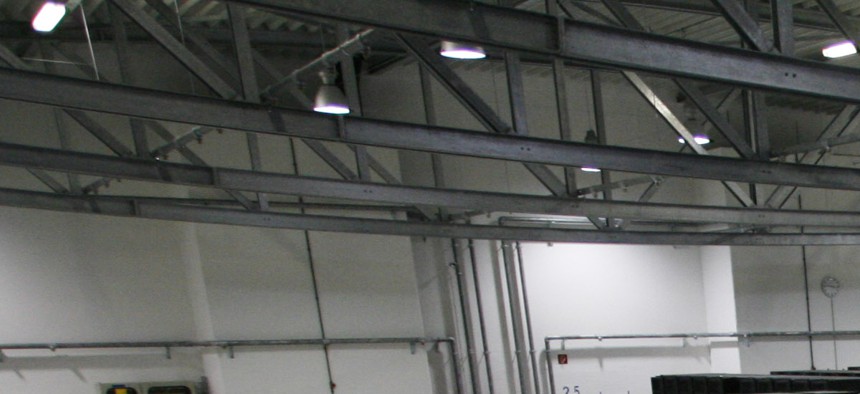
A view into the room gathering the super computer "Jugene" at the Research Center Juelich in Juelich, western Germany. Hermann J. Knippertz/AP
America's Spies Want To Build an Even More Super Supercomputer
The Intelligence Community's research arm is directing scientists to build a system that could make America the frontrunner in world supercomputing. By Frank Konkel
The Intelligence Advanced Research Projects Activity is funding research that could fundamentally change the field of supercomputing.
Announced today, IARPA – the intelligence community’s research arm – awarded research contracts in support of its Cryogenic Computer Complexity, or C3, program that IARPA hopes will lead to a new generation of energy-efficient superconducting supercomputers that far exceed the capabilities of current supercomputers.
The multiyear research may also make the U.S. government the frontrunner over China, Russia, the European Union and Japan in the global race to build a computer capable of breaking the famed exaflop barrier – capable of a quintillion, or 1,000,000,000,000,000,000 floating point operations per second.
The fastest supercomputers today, including China’s 55-petaflop Milky Way 2, are based on complementary metal oxide semiconductor technology that requires tens of megawatts to power. Scaled out on today’s technology, IARPA estimates an exascale-capable supercomputer would require hundreds of megawatts to power, which would need a power source akin to the Hoover Dam. It would also cost a fortune – Japan recently invested $1 billion in an attempt to build the world's first exascale computer.
“The power, space and cooling requirements for current supercomputers based on complementary metal oxide semiconductor technology are becoming unmanageable,” Marc Manheimer, C3 program manager at IARPA, said in a statement. “Computers based on superconducting logic integrated with new kinds of cryogenic memory will allow expansion of current computing facilities while staying within space and energy budgets, and may enable supercomputer development beyond the exascale.”
IARPA awarded the research contracts to teams led by IBM, Raytheon-BBN and Northrop Grumman Corporation – all large contractors with histories in supercomputing.
C3’s stated goal is to use recent breakthroughs in superconducting technologies to find a long-term successor to CMOS-based supercomputers. These machines would be smaller, require less physical infrastructure to cool them and would have a much more reduced energy footprint than current machines.
According to IARPA, researchers will develop critical components for memory and logic subsystems and plan a prototype computer. If the high-risk, high-reward investment pans out, the components would integrated into the world’s first superconducting supercomputer.
NEXT STORY: Why Eel Drones Are the Future of Naval Warfare
